Thinking Conceptually about Journeys through an Author Study
by Jennifer Griffith, First Grade Teacher, Van Horne Elementary School
Moving my students toward thinking conceptually was a new way for me to frame my curriculum. I was intrigued with exploring an idea-centered curriculum that focused on deeper, conceptual ideas as opposed to a topic-centered curriculum that focused on details and memorization (Erickson, 2002). As an educator I push my students’ thinking when reading or responding to a piece of literature but often I find myself settling for their first responses or retellings from the story. I wanted students to dig deeper and be able to connect the concept of journeys to their own lives and to other books. Erickson (2002) states that a concept is “a mental construct, an organizing idea that categorizes a variety of examples” (p.56) and I was curious to see if a concept could become an organizational frame for young children’s thinking. I also wanted our kids to see the connection between our work in the learning lab and in the classroom because I believed that this link was the key to their understanding of journeys.
I have frequently used Author Studies with first graders so I knew linking journeys to this type of study in the classroom wouldn’t be difficult. The challenge would be supporting the kids in thinking conceptually about journeys. I enjoy author studies as a way to introduce kids to a particular author’s work and as a link to genre in our Writers Workshop. I felt an author study would help to weave our work from the lab with journeys into literature engagements back in my classroom. I chose Patricia Polacco as our author because I was familiar with her work and owned a number of her books. Since her characters often go though a change to create a pathway within her books, they seemed to lend themselves to conceptual connections to journeys.
The Learning Lab was a place we came on a weekly basis and where our conceptual thinking began. We started with working hard at having the kids define and identify the types of journeys in pictures books and to discuss why they considered something a particular journey. The first couple of months were spent building the foundation for thinking conceptually. We focused in the lab on engagements with literature that supported their thinking about journeys and utilized a variety of mapping strategies to explore the journeys in these books.
In September the children were asked what a journey was. Their responses were similar–journeys had to do with going somewhere or being on a trip. We were introduced to The Pink Refrigerator (Egan, 2007) and looked at Dodsworth’s adventures as a journey. Lisa Thomas, our instructional coach and director of the Learning Lab, demonstrated how to create a path to chart Dodsworth’s journey throughout the book.
Kids did start thinking beyond journey as trip as they considered the significant events in Dodsworth’s life as a journey. They were then asked to create their own life journey maps at home, creating a similar pathway to Dodsworth’s. When the kids brought their maps in to share it was easy to see that many had received a great deal of help by family members and so they had a hard time explaining the journeys represented on their life maps. I was disappointed as I felt the purpose of this assignment had been lost and so students were still looking at journeys as going somewhere. This could be seen in their responses to Lisa’s question, “How is your life like a journey’?” Kids responded with:
- • We go on trips and come back.
• Changing.
• Having birthdays.
• Going camping.
• Discovering new things.
It was obvious that we needed to shift our study and our thinking about how to help our kids think conceptually about journeys. Erickson (2002) states “that a curriculum cannot be coherent if students do not realize the relevance of the study to their everyday lives” (p.44) so we knew that we needed to find other ways to connect the concept to their lives.
Classifying different kinds of journeys helped kids think more conceptually. To help us with this process, we reread The Pink Refrigerator and studied the types of Dodsworth’s journeys and then created a web to help organize our conceptual thinking.
To help the kids connect journey to their own lives we asked students to go back to their life journey maps and create small group webs identifying the kinds of journeys on their maps. The kids seemed to grasp this idea of classification but were still having a hard time relating their categories to a journey. They did identify a much wider range of categories from their maps.
- • Teaching and Learning
• School Journeys
• Young to Old
• Sports
• New Animals
• Meeting New People
• Problems
• Trying New Things
• Physical
After listening to When I Was Little: A 4-Year-Old’s Memoir of her Youth (Curtis, 1995) we identified growing and learning journeys. The kids loved the illustrations and dialogue in the book and were highly engaged during the reading of the story. Their talk was much livelier because of this engagement.
- • The girl was a baby and she grew up.
• It was a growing up journey.
• She told us about stuff she couldn’t do and now she can.
• It’s a learning journey.
• She’s taking us on lots of journey.
• It’s a reading journey- talking about things she learned to do.
• Growing journey- a baby born, gets older and older.
• She learns about herself as she gets older.
We talked about how there are lots of changes as you get older and Lisa challenged the kids to identify the changes that happened in the book. This task seemed to come easy for them.
- • Throws a fit to problem-solving
• Goes from sad to happy
• Crawling to walking
• Car seat to seat belts
• Crib to bed
• Eating yucky stuff to eating good stuff
At tables the kids worked on a response strategy of mapping changes from the book using pictures and words.
They then were able to take these changes and add them to our web of ‘kinds of journeys’ to help their conceptual thinking.
- • School Journeys- went to preschool
• Young to Old Journey
• Learning Journey- to talk
• Problem Journey- time out
The following week we continued exploring new journeys through literature and read No, I Want Daddy! (Brune-Cosme, 2004). The kids were encouraged to look at how the characters changed emotionally rather than physically. They were prompted to search for emotional journeys as Lisa read the book for a second time, giving them a focus for their listening, an important strategy that gave the kids time to process the story. They had many comments about this book:
- • Starts with Anna and she goes from happy to mad.
• Dad goes from happy to sad in the story.
• Little girl was excited and then when her mom tells her no she goes to being mad.
• She was happy when Daddy came home and then is cross at her mom.
The kids then did a response strategy to help them think about emotional journeys where they were able to include the emotional changes of characters.
It was then decided to add feeling journeys to our growing web on kinds of journeys. It was at this moment that Kathy Short, a collaborator from the University of Arizona, Lisa Thomas, the Instructional Coach at Van Horne, and I saw a shift in their thinking and their ability to explicitly discuss the ‘why’ of a journey. The kids were backing up what they were saying related to emotional journeys and could identify the shift in feelings and the events that led to the shift.
- • I noticed when Anna came home her mom was grumpy, got answer, said not to everything and Anna was naughty.
• She was in a happy mood when she got home when her mom said no she got angry.
• She wanted to have her friend at her house, mom said no, she was happy to see her dad, still liked her mom but said no to her mom because she was still angry with her.
It was time for the kids to use a “pathway” to illustrate the process of a journey. The goal was to get the kids to think about the in-betweens of the journey, moving past just thinking about the beginning and end. Looking back at No, I Want Daddy! (2004) the kids were able to reconstruct the pathway of this book.
Stevie (Steptoe, 1987) was the book where I noticed that their conversation was beginning to relate to journeys and they were noticing the change that occurred in the characters. It was one of those ah-ha moments as a teacher.
- • In the middle he felt annoyed and at the end he missed him.
• It was an emotional journey.
• He went from being mad to liking Stevie.
• What he felt at the beginning was happy before Stevie came and then he changed to being annoyed after Stevie stayed.
• Mom had an emotional journey- she didn’t care what Stevie did then Stevie moved and she cared about Robert and his feelings now.
The kids then worked on creating a pathway using illustrations and words to show the emotional journey of a chosen character from the book.
By October they were making great connections in the lab and I felt that the kids were ready to move into our focused study of Patricia Polacco to bring this conceptual thinking into the classroom. It was important to me that they had the foundations of thinking about journeys as more than just a trip before starting our author study. I felt that they had a grasp on creating a pathway and identifying different kinds of journeys in literature. I decided to start with our study to help enhance our thinking conceptually about journeys. As a staff we reflected on our own definition of journey. The definition that resonated with me used during this study for my own understanding is that a “journey is a movement of events along a physical, emotional, intellectual, social or spiritual pathway.” I believed that the response mapping strategies that we had been using to explore journeys could help their thinking about Polacco’s books.
We began with The Keeping Quilt (Polacco, 2001) and decided to chart the “Big Ideas” in each story to guide our thinking and to see connections between her books. The ideas from our first book included:
- • The quilt was passed down.
• There were bread, salt, gold coin, sprinkle of wine in all family events.
• She put herself in the story.
• Noticed the illustrations- that only the babushka is in color.
As a class we created a pathway of the quilt’s journey, highlighting the momentous events. The kids were able to identify the in-betweens in addition to clearly defining the beginning and end of the pathway.
The next day we revisited the book, this time with both the first and second graders together and asked them to record their thoughts on a grafitti board. The goal was for the kids to respond with illustrations, words, connections, thoughts or wonderings while the book was being read aloud.
This board, created by second graders, shows a growing up journey. The child chose to list the important life events of the grandma, her life in Russia and the U.S. raising a family, and then dying. The child also highlighted the quilt and the events it was a part of such as the births and weddings.
We continued to explore more Patricia Polacco books as our work in the lab exploring journeys continued. My Rotten Red-Headed Older Brother (Polacco, 1998) elicited more discussion and connections among Patricia’s work. I noticed the evolution of their talk and the way their thinking became more thoughtful and not so random. They went from talking about the part they liked the best or simple things they noticed in illustrations, to making connections between books and referring to journeys in their conversation.
- • Babushka was in this story as well.
• Even if sister or brother are mean they’ll help you when you get hurt.
• Patricia put herself in the story.
• It’s about family.
• The grandma was alive in the story so it must have taken place before she died.
• It wasn’t until “Betty Doll” that I saw the kids begin to connect it to the types of journeys we had been discussing and make the connections between the Polacco books.
• The doll gets passed down like the quilt.
• Clothes made the doll like clothes made the quilt.
• She uses her family as characters again.
• It was an emotional journey.
• When death happens they’re always in our hearts.
It was exciting to see their conversation shifting from simple observations of the story to bigger ideas and connections.
Thundercake (Polacco, 2002) and When Lightening Comes in a Jar (Polacco, 2007) were two other books where the kids made connections across her books.
- • She put herself in the story
• Family memories
• Emotional journeys
• Faced her fears
The strategy of comparison charts was used in the lab to analyze connections between the books in our text set of Journeys and so we used the same strategy with our Polacco study. Intertextuality is the process of searching for connections across a group of texts; in this case, students were connecting them to a common journey. In the lab the children sorted the books into categories to look for these intertextual connections. They would choose two books and explain their reasoning for connecting them. I was impressed with their responses.
- •
- (de Deu Prats, 2005) and
The Pink Refrigerator
- (2007) both have something they find, roller skates and frig, gave him a way to try skating and to not be shy anymore and gave him stuff to try.
• When I Was Little (1995) and Once There Were Giants (Waddell, 1997) were growing and doing things.
• Stevie and No, I Want Daddy! were about families and people. Could also use When I was Little and Once There were Giants.
The kids also took a journey from their web and identified it with a particular book. Illustrations of these connections were created by partners and placed on the chart.
With our Polacco study we grouped our first and second graders together and had them create comparison charts with the books we had studied. We had a whole group discussion of connections and journeys between the different books and asked the kids to choose two Polacco books to connect to a common journey. The various journeys they came up with included family, emotional, author, mind, physical, learning, and passed-down journeys. This thinking was due in large to the “Important Ideas” charts we had been keeping in our rooms related to the books we read. Our groups were made up of a mix of first and second graders. Each group was given a chart listing two journeys from our class discussion and they then could choose the two Polacco books they wanted to attach to those journeys. Their job was to intersect the book they chose and the journey and illustrate the connection with both pictures and words.
Their work was fantastic; they were using the word “because” to explain their thinking and they had no problems identifying types of journeys and their relationships to the books. I believe this was made possible due to their exploration of the broad concept of journeys in the Learning Lab and enhanced with our author study of Patricia Polacco. Overall the whole experience allowed my kids to move deeper in thought when reading and discussing a piece of literature.
When I set out on this study I was skeptical about whether first graders were going to conceptually grasp the idea of journeys. The engagements that were used to help the students understand journeys were successful; particularly the use of mapping as a response strategy and exploring different journeys in literature to develop broader views. Approaching curriculum from an “idea” point of view rather than a “topic” helped my students achieve conceptual understanding as a way of thinking about the world. Their major focus of attention was no longer on gathering details and facts but on developing deep and essential understandings (Erickson, 2002). This shift in focus also led to a more coherent curriculum where the parts were unified and connected by a sense of the whole, in our case by the connections to journeys woven across our classroom, school, and everyday lives. This sense of connectedness gave a different energy and purpose to our work in the classroom. We moved away from only doing school work to journeying together in life work.
References
- Egan, P. (2007). The pink refrigerator. New York: Houghton Mifflin.
- Curtis, J. (1995). When I was little. New York: HarperCollins.
- Brune-Cosme, N. (2004). No, I want daddy. New York: Clarion.
- de Deu Prats, J. (2005). Sebastian’s roller skates. La Jolla, CA: Kane/Miller
- Erickson, H.L. (2002). Concept-based curriculum and instruction. Thousand Oaks, CA: Corwin.
- Polacco, P. (2001). The keeping quilt. New York: Aladdin.
- Polacco, P. (1998). My rotten red-headed older brother. New York: Aladdin.
- Polacco, P. (2002). Thundercake. New York: Philomel.
- Polacco, P. (2007). When lightening comes in a jar. New York: Puffin.
- Steptoe, J. (1987). Stevie. New York: HarperCollins.
- Waddell (1997). Once there were giants. New York: Candlewick.
WOW Stories, Volume I, Issue 2 by Worlds of Words is licensed under a Creative Commons Attribution-NonCommercial-ShareAlike 4.0 International License.
Based on a work at https://wowlit.org/on-line-publications/stories/storiesi2/.

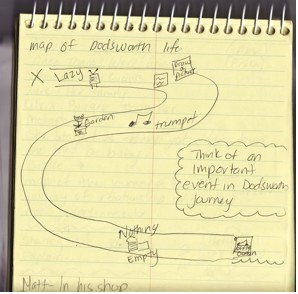
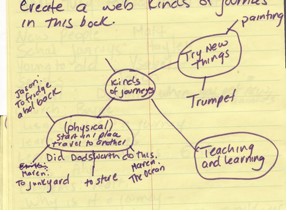


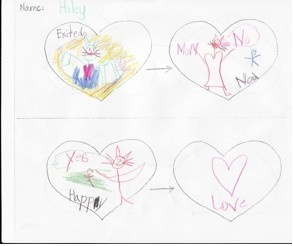
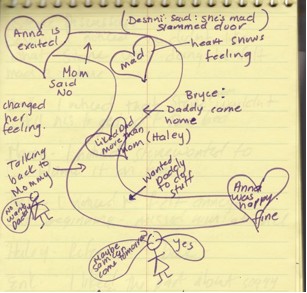


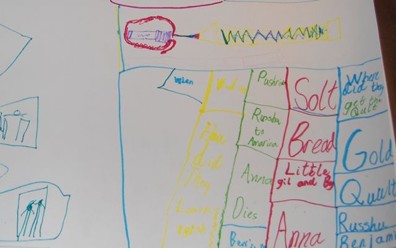
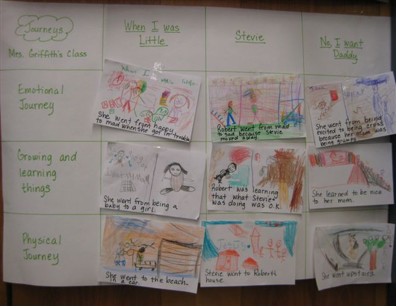


One thought on “WOW Stories: Connections from the Classroom”